The sweet agony of choice – which wine for an aperitif?
Before we turn our attention to the actual topic of aperitifs and the “agony of choice” question of the right wine, it is worth first shedding light on one or two enlightening aspects of the aperitif phenomenon. This little digression – and while you’re reading this article, you can treat yourself to a glass of wine with your literary aperitif – will give you a completely different understanding of the topic and will leave you looking forward to your next aperitif with even more anticipation. I promise.
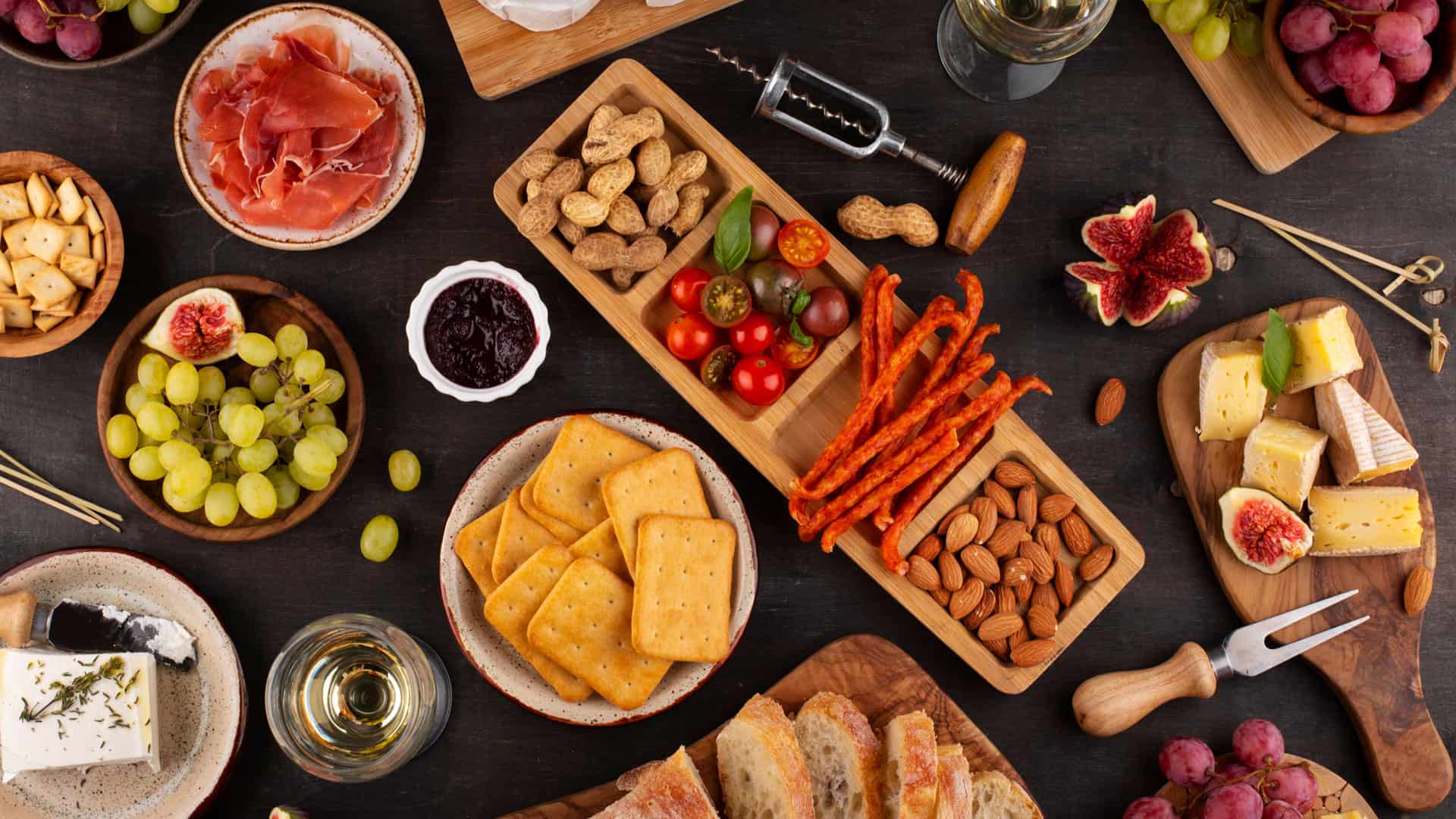
For many of us, the word aperitif holds a certain fascination and magic, as it symbolizes a very special, blissful moment of the day. Above all, it is that precious and sweet moment when you seem to glide weightlessly from the recently finished working day into the pleasurable end of the day. And one or two of us may also need to wash down the last of the anger and stress of the day with the right drink. The aperitif therefore also has a certain cleansing effect. Above all, however, it allows us to forget the time and the noisy world around us for a moment and indulge in sweet idleness, conversation and enjoyment. But it is also a moment of anticipation. Because in addition to its social and emotional function, the aperitif with all its advantages ultimately also plays the not unimportant role of a sensual prelude in the truest sense of the word to what will follow as the culinary highlight of the day (unless you have already indulged in an extended lunch with an aperitif and accompanying wines at lunchtime, which is probably the case for at least a few of us on a regular basis).
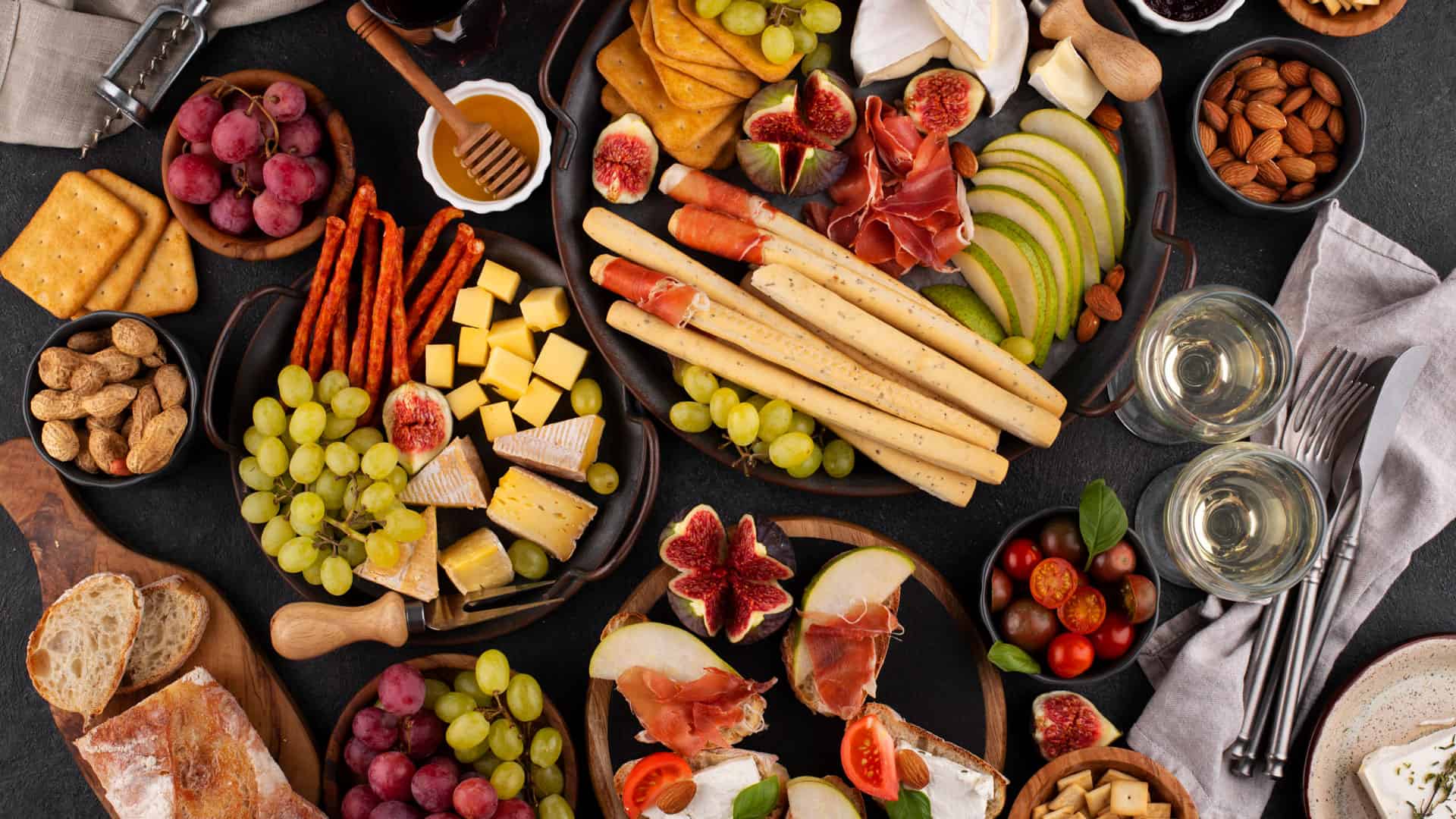
Vinum hippocraticum – the forerunner of today’s aperitif
And that brings us (almost) to the actual topic. Hippocrates already recognized the importance of the aperitif. Well, the famous physician did not yet know the ceremony of the aperitif itself, but he had already recognized how important it can be to give people suffering from a lack of appetite a drink called vinum hippocraticum based on flavoured wine, wormwood and herbs before a meal. And this is precisely the original mission of the aperitif, which also explains why drinks are usually served that are rather tart or bitter (e.g. pastis in France or Campari in Italy). However, as tart or bitter drinks give most people little or no pleasure, and our society is increasingly committed to variety and enjoyment, it did not take long for wine to gain a firm place in the ranks of established aperitif drinks over the centuries, alongside numerous other beverages. To a certain extent, the acidity and tannins inherent in wines take over the function of the bitter and astringent components, which are intended to prepare our digestive system for the upcoming meal in the best possible way. Incidentally, this is exactly what is hidden in the word aperitif, which comes from the Latin term “aperire”, meaning “to open”, and which is intended to both lighten the mood and stimulate the digestive system or open it up for the meal to follow.
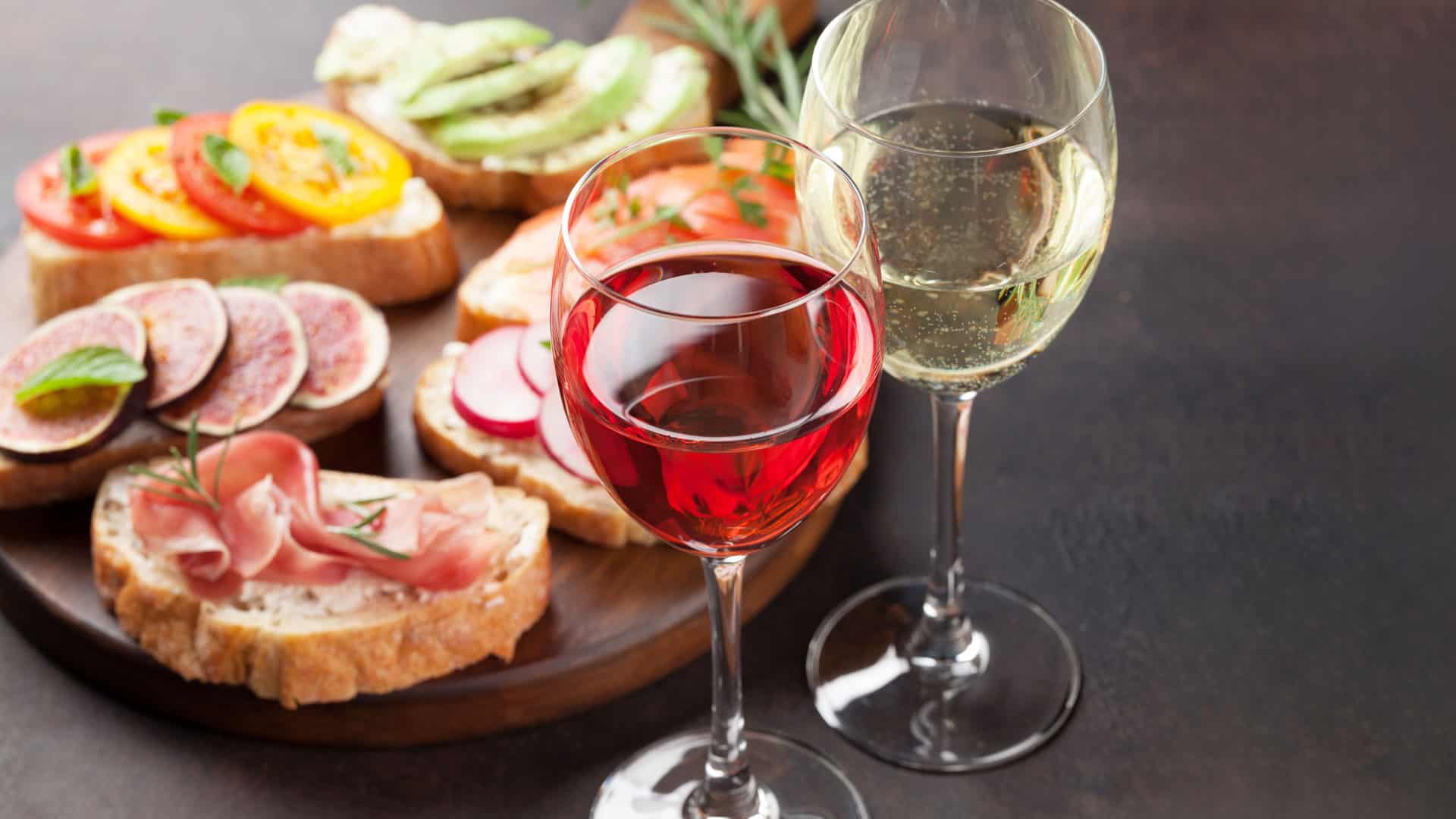
Aperitif – the basic rules for choosing wine
Of course, there is now an almost endless range of possible aperitif drinks, from pre-dinner cocktails, port wine and sherry to liqueur-like bitter drinks such as Manzoni, Averna & Co. This is also due to the fact that the aperitif has now achieved cult status due to its international acceptance and is celebrated in many places. The rule is: whatever you like is allowed. There are no limits to creativity and individualism. However, when it comes to wine and aperitifs, there are a few important aspects that should be considered when choosing a wine. One of the, if not the most important, rule of thumb is that the wine you want to serve with an aperitif or enjoy yourself should be light, refreshing, not too strong in alcohol, dry, fruity and yet versatile. But don’t worry, even with this in mind, you still have the full spectrum of wines to choose from. And that doesn’t just apply when it comes to color. From white wine to rosé wine and red wine to sparkling wine, there are numerous options that meet these criteria and promise unrestricted aperitif enjoyment before the meal. The best Swiss winery of the decade alone, Adrian & Diego Mathier Nouveau Salquenen AG, has no fewer than 25 wines in its range that are ideal as aperitif wines.
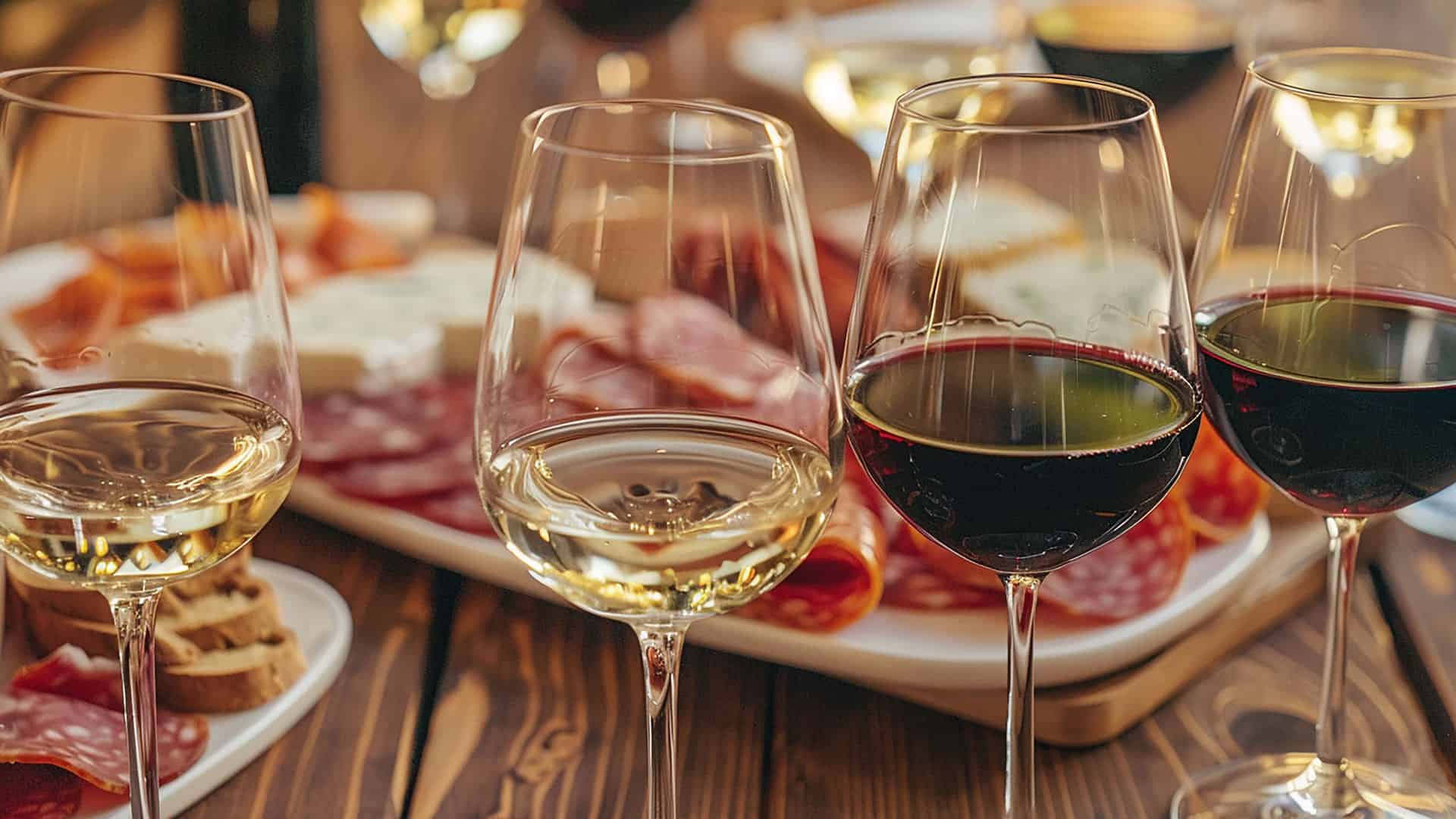
Valais aperitif white wines AOC
If we take a look at Valais white wines to enhance your aperitif, the classic Fendant naturally springs to mind. The best Swiss winery of the decade from Salgesch offers four of them, including the Fendant du Ravin AOC Valais, a Swiss champion and world champion Fendant that is remarkably fruity, drinkable, elegant, harmonious and yet dry in the glass. The three Fendant representatives of the Terre Promise line, including the Fendant Molignon Terre Promise AOC Valais with its mineral note and elegant acidity, which is very balanced, fruity and dry on the palate, are in no way inferior.
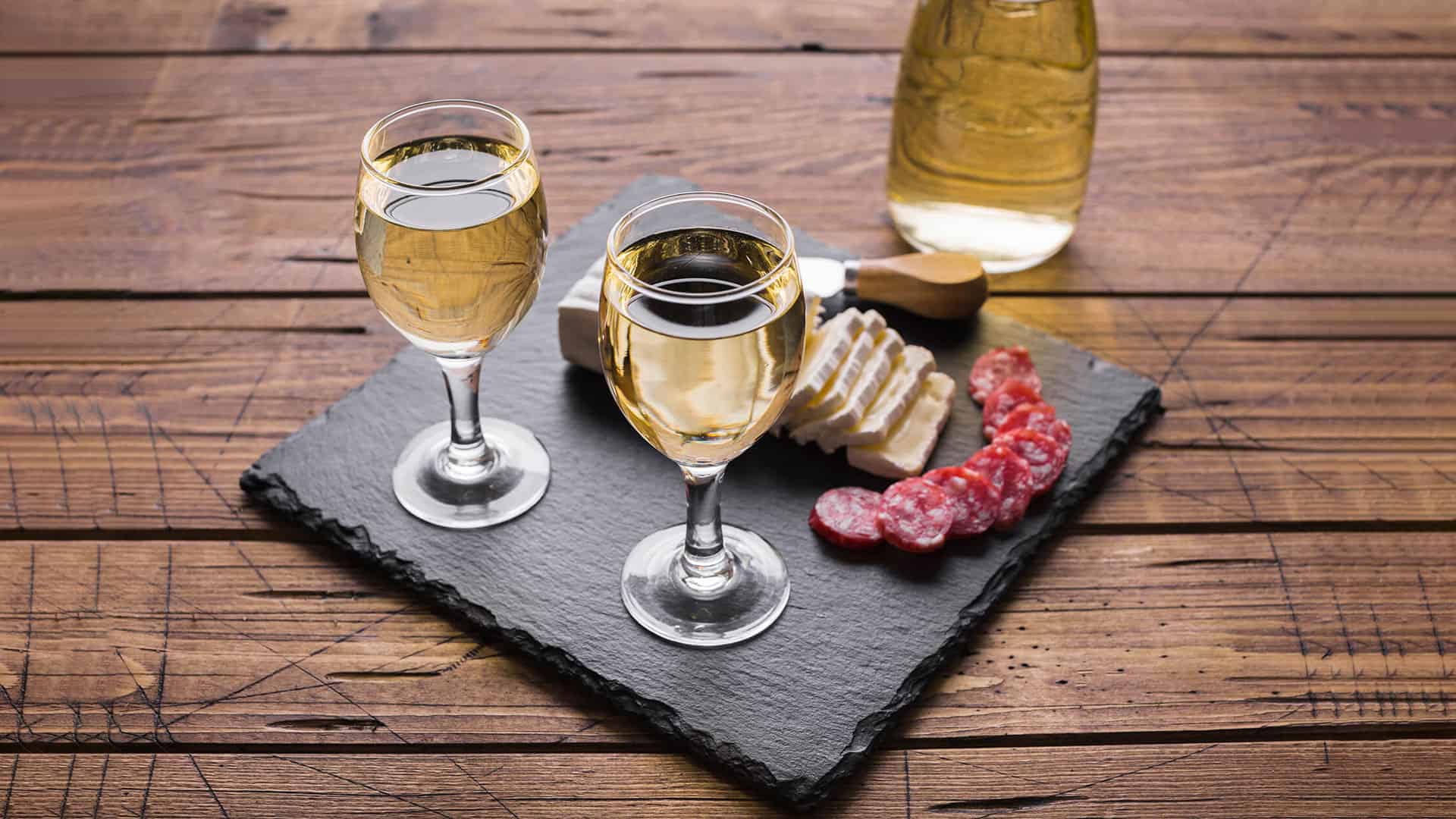
Let’s stay with the white wines from this winery for a moment. If you prefer a more full-bodied wine, and in the order in which they are named, you should go for the Johannisberg Weidmannstrunk AOC Valais, the Petite Arvine Les Pyramides AOC Valais or the Heida Les Pyramides AOC Valais from the estate of the successful Salgesch winegrower Diego Mathier. The latter two have repeatedly been named the best Swiss white wines, so the question of the right choice is superfluous for this reason alone. But the Petite Arvine Les Pyramides AOC Valais perhaps stands out a little more among this triumvirate of pleasure, as its complex aromas are reminiscent of ripe fruit, dominated by rhubarb compote and grapefruit. On the palate, this wine also develops a balanced, complex structure with a beautiful, ripe acidity. Last but not least, its typically salty finish makes it the ideal candidate for aperitifs for many, as it ideally fulfills all the requirements of an outstanding aperitif wine.
Valais aperitif rosé wines AOC
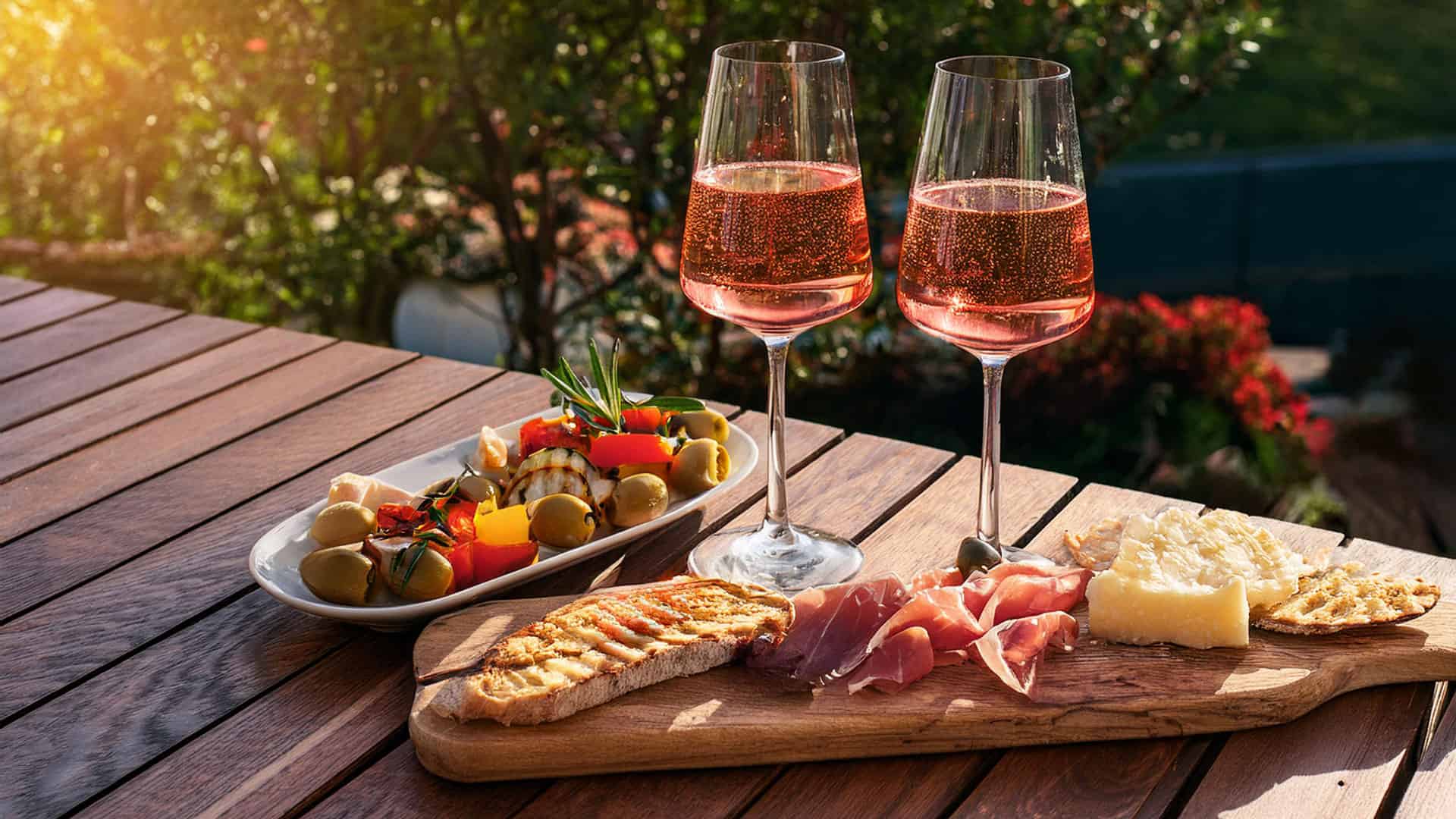
You either like them or you don’t. There is probably no other type of wine that divides wine lovers like rosé wine. For many, a rosé wine is the epitome of summer wine and therefore a classic aperitif drink. Light, dry, often with mineral notes and a hint of floral bouquet and drunk young, rosé wine is a wine that is simply fun to drink (and not just) as an aperitif. And that’s exactly what aperitifs are all about. The successful winemaker from Salgesch, Diego Mathier, has two rosé wines in his portfolio that couldn’t be more different. Let’s start with the Dôle Blanche Frauenfreude AOC Valais, a blend of Pinot Noir and Gamay. Incidentally, both are grape varieties that also excel as aperitif wines in the single-varietal red wine segment, see also the next chapter. Dôle Blanche is an elegant rosé that knows how to seduce both men and women with its typical floral bouquet, charming fruity aroma and slightly sweet finish. Served at 8 to 10°, you will wish that the balmy summer evening would never end. The other representative in this category is the Oeil-de-Perdrix La Matze AOC Valais. Of course, titles are just smoke and mirrors, as the saying goes. But let’s be honest and hand on heart: a double world champion and Swiss champion must have something to offer in the glass, don’t you think? Made 100% from the Tête de Cuvée Pinot Noir grape, which finds paradisiacal terroir conditions in Salgesch and the surrounding area anyway, this dry rosé wine delights with its beautiful acidity, elegance and full-bodied appearance. For this wine, you should set your fridge a few degrees cooler in good time, because between 6 and 10 degrees drinking temperature, this aperitif dream reveals its perfect interplay of aromas on your palate.
Valais aperitif red wines AOC
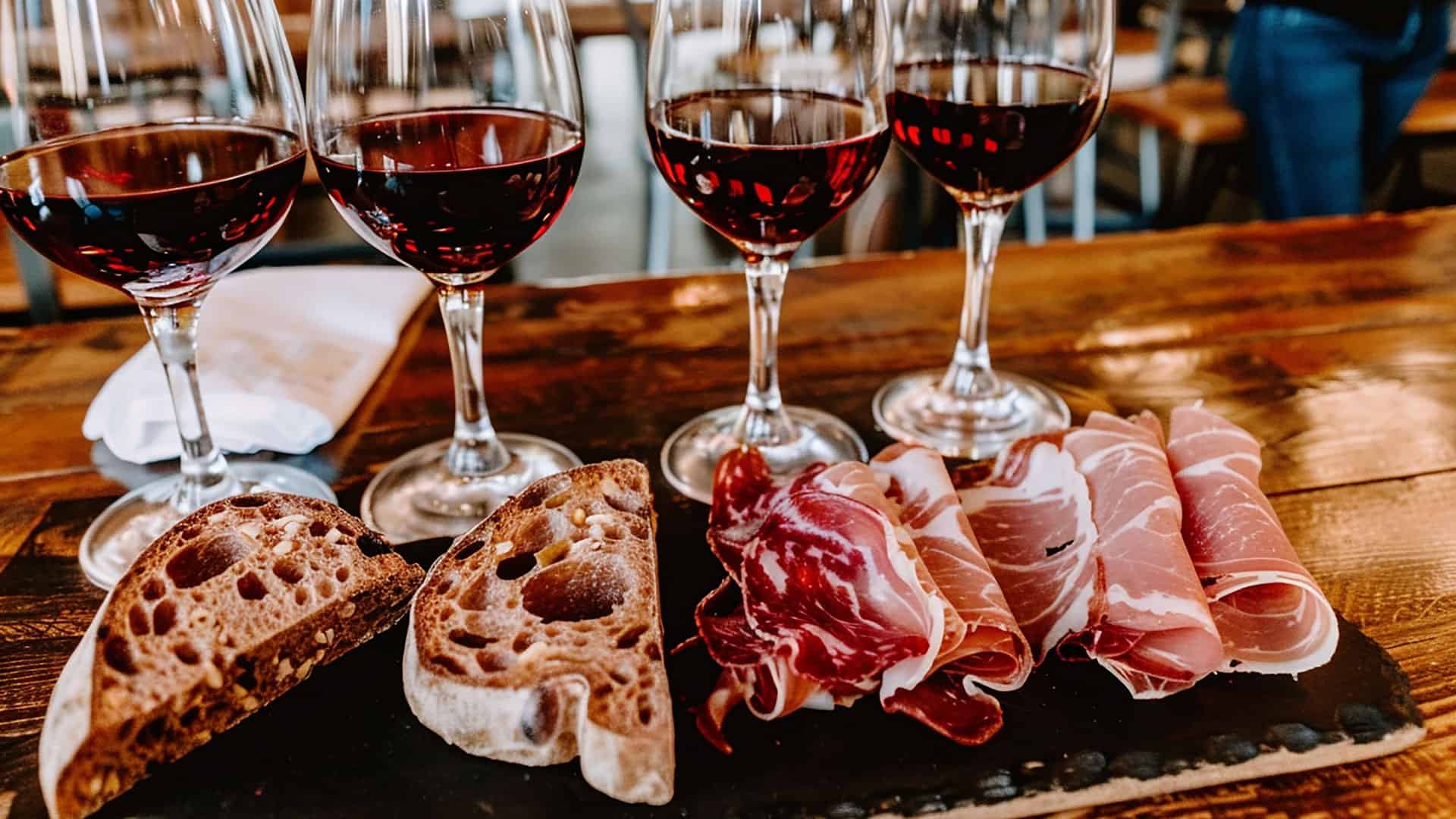
Red wine with an aperitif, yes, is that even possible, you may ask yourself. And with a very clear yes in your luggage, you can confidently set off in search of the right red wine. Just make sure that it is a light and preferably dry red wine with as little tannin structure as possible, if at all. And in this case – especially in summer or on hot days in general – feel free to play with the temperature. You will be amazed (and delighted) at how excellently nuanced a slightly chilled Pinot Noir, for example, comes across in the glass and will delight your palate as an aperitif wine! And so you basically have the entire range of Pinot Noir wines from the three-time best Swiss winery of 2018, 2011 and 2007 at your disposal. However, we recommend that you focus in particular on the Pinot Noir Lucifer AOC Valais or the Pinot Noir Nouveau Salquenen AOC Valais – as mentioned above, preferably slightly chilled. Not because the other Pinot Noir wines from Diego Mathier cannot hold a candle to them in terms of quality, but because the other Pinot Noir heavyweights from Mathier are simply more worthy representatives of their variety on other culinary occasions, also in view of their ageing in barriques. And as always in life, there is no rule without exception. The Gamay Mephisto AOC Valais is recommended for those who like to enjoy a light red wine with a tannic structure with an aperitif. A wine with a racy nose, intense tannin structure and a soft finish that is – in the truest sense of the name – devilishly well suited for your aperitif.
Valais aperitif sparkling wines
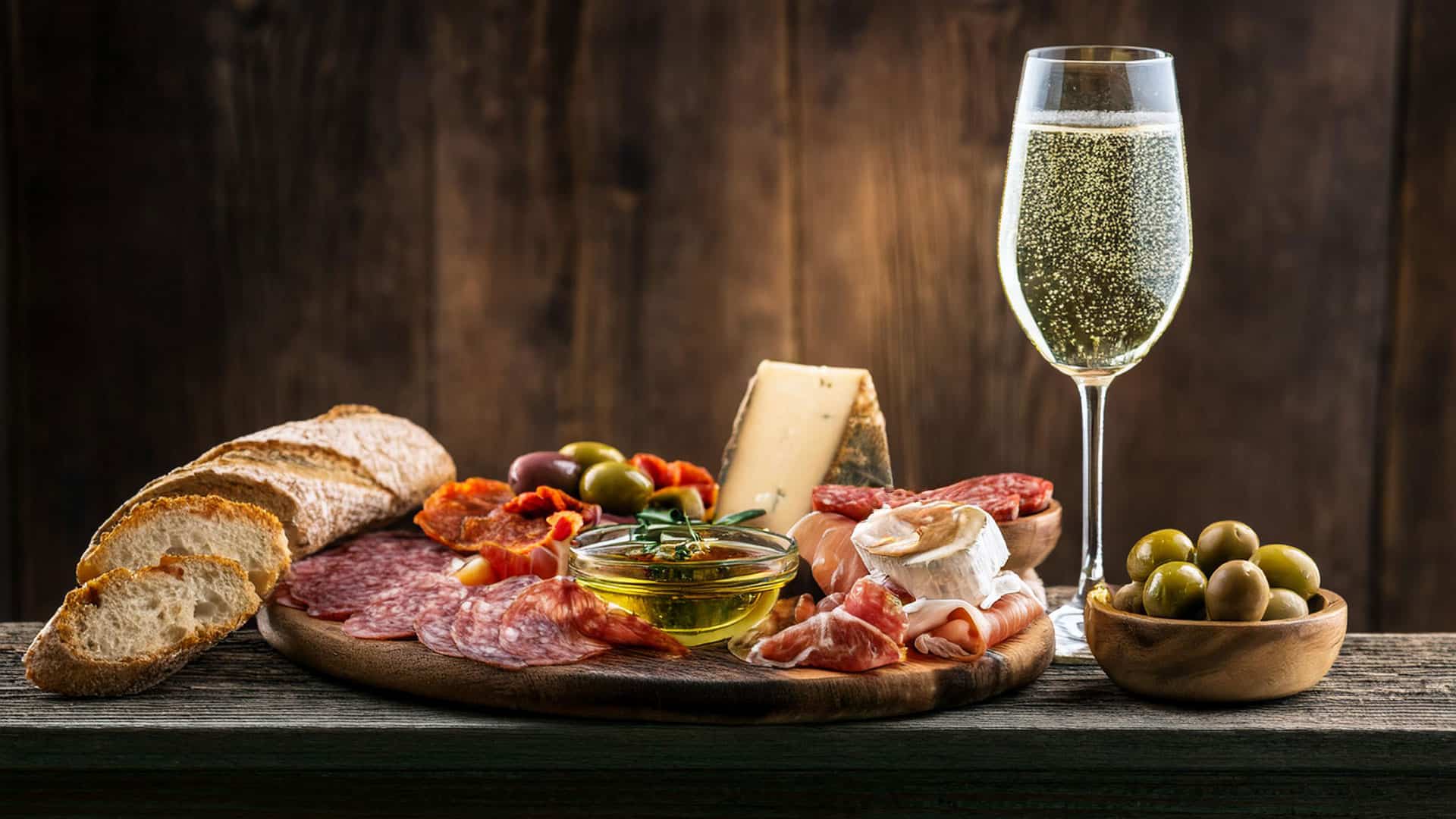
Sparkling wine always works. Sparkling wine knows no bounds. Light, sparkling and refreshing, with a well-integrated acidity and a fine perlage, sparkling wines, preferably dry, are ideal as the star of your aperitif. This is not only because everyone enjoys a glass of fine sparkling wine. It is also because you can easily serve a sparkling wine with virtually any type of aperitif snack, as the sparkling drink enhances almost any type of aperitif food. The Folie à deux sec or demi sec version from Mathier not only enchants precious moments for two, but also in larger groups and is guaranteed to ensure cheerful and unforgettable aperitif moments for all those present.
FAQ:
Why do AOC and DOC stand behind a product like wine, and what do the abbreviations mean?
AOC stands for “Appellation d’Origine Contrôlée”, which means “controlled designation of origin” in French. DOC is the Italian equivalent and means “Denominazione di origine controllata”. These systems of designation of origin were introduced in Italy and France and serve to protect and regulate the origin and quality of a product such as wine (for example a Cabernet Sauvignon, a Chardonnay, Sauvignon Blanc or Riesling) but also other agricultural products. Wines bearing one of these labels must meet certain requirements in terms of the growing region, the grape varieties, the cultivation methods, the yield and the winemaking process. This label, which consumers find behind the wine names and on the labels, guarantees a certain quality and origin of the wine and is an important feature in the classification and sale of wines. Other countries have introduced similar systems for labeling and regulating wine quality and origin or have adopted the system from France or Italy.
Where can you taste aperitif wines from the Mathier winery?
Mathier aperitif wines can be tasted very well in Salgesch in Valais directly at the Adrian & Diego Mathier Nouveau Salquenen AG winery. These aperitif wines, which are enjoyed before a meal, can also be tasted at the Ritschard wine shop in Interlaken and at the Mathier & Bachmann wine cellar in Salgesch in Hochdorf / Lucerne. All information and offers for groups with prices in CHF for wine tastings can be found here.
Can I buy Mathier aperitif wines online?
Yes, the aperitif wines are easy to buy online. You can find these wines, which are not only enjoyed before but also with food, in the store on the website of the Adrian & Diego Mathier Nouveau Salquenen winery, www.mathier.com. They can also be ordered online from the Ritschard Interlaken wine store at www.ritschard-weine.ch. And you can also buy these Valais aperitif wines in the store of the Mathier wine cellar in Salgesch, www.salgescher-weinkeller.ch. The prices of the aperitif wines are shown in CHF in all three online stores. They are then shipped directly to your home by a special shipping service provider.
Is the price quoted in CHF in the online store including VAT and shipping?
The price for the entire range of wines in the online store of Adrian & Diego Mathier Nouveau Salquenen AG includes VAT and is quoted in CHF, i.e. the price for individual bottles, gift boxes and tasting packages is quoted in CHF on this page. The accessories and Valais specialties are also listed with the CHF price. Shipping is offered for orders of 12 units or more, unless otherwise specified as part of special offers. For deliveries of less than 12 units, a surcharge of CHF 10.00 will be charged for shipping.
What is the difference between Prosecco and sparkling wine?
Prosecco is also a sparkling wine, i.e. a wine-based product with a protected designation of origin. It comes from the north-east of Italy. Produced in the Veneto region, the wine, which is usually made from the Glera grape, is carbonated. In contrast to Diego Mathier’s sparkling wines, no fermentation takes place in the bottle. Prosecco contains comparatively little carbon dioxide. As a result, Prosecco does not sparkle as intensely as other sparkling wines.
What do the dry, brut, extra dry and secco levels mean for sparkling wines?
Dry, brut, extra dry and secco are terms that describe the sweetness of sparkling wines. Dry is rather dry, while brut is even drier. Extra dry sounds paradoxical, but is slightly sweeter than brut. Secco means “dry” in Italian, but in relation to sparkling wine it is also slightly sweet. These terms can vary depending on the producer, so it is important to read the labels. When choosing sparkling wine and prosecco, it is crucial to consider the desired sweetness according to your personal taste.
Have Mathier aperitif wines already been awarded a prize?
The list of Mathier aperitif wines that have already won an award is long. If we concentrate on classic aperitif wines from the Valais, the Mathier winery’s Fendant du Ravin AOC Valais (bottle price in CHF), the Oeil-de-Perdrix La Matze AOC Valais (bottle price in CHF) and the Heida Les Pyramides AOC Valais (bottle price in CHF) are worthy of mention. All three wines from the Mathier estate have already won several awards. You can find the awards and the exact details of each prize in the section Our greatest successes.
Which grapes are used to make the Mathier aperitif wines?
The grapes used for the aperitif wines from the Mathier winery vary depending on the wine. Of the white wines (French vin blanc), the Fendants are made from Chasselas grapes. Johannisberg is made from Sylvaner grapes and Heida from the autochthonous Heida grape variety, to name just a few examples of possible grapes. The rosé wine Oeil-de-Perdrix La Matze aoc Valais (bottle price in CHF) is made from Pinot Noir grapes, which are famous for Salgesch. The Folie à Deux brut sparkling wine vin de pays suisses (bottle price in CHF) and the sweeter Folie à Deux demi sec sparkling wine vin de pays suisses (bottle price in CHF) are also made from Pinot Noir grapes. The Malvoisie La Valaisanne AOC Valais (bottle price in CHF), on the other hand, is made from Pinot gris grapes.
What is the difference between sparkling wine and champagne?
The term champagne refers to carbonated wines produced in the Champagne region of France. Sparkling wine from a French region other than Champagne may not be referred to as champagne, as the product was not produced in Champagne.
The carbonated wine from the Champagne region also differs from other sparkling wines due to its unique climate and distinctive soil conditions. These conditions, which can only be found in Champagne, have an effect on the taste and quality of the drink from Champagne. It is therefore clear that even carbonated wines that are produced in other countries and therefore do not come from Champagne cannot be declared as Champagne, i.e. as a product from Champagne. In Spain these wines are called Cava, in Italy Franciacorta and in Germany Sekt. The carbonated wine from Champagne is therefore a specific type of sparkling wine, whereas sparkling wine is a general term that refers to any wine with carbon dioxide, regardless of its geographical origin.
The second, no less important difference between sparkling wine and the product from Champagne lies in the production process. The production of carbonated wine in Champagne requires a special method known as the traditional method or Methode Champenoise. This involves a second fermentation in the bottle to produce the carbon dioxide. This process usually takes several years and contributes to the complexity and finesse of the wine from Champagne. For sparkling wine, various production methods can be used instead, such as the Charmat method or controlled fermentation in tanks.
Another difference lies in the authorized grape varieties. The sparkling wine from Champagne is mainly made from three grape varieties: Chardonnay, Pinot Noir and Pinot Meunier. Sparkling wine can instead be made from a variety of grape varieties, depending on the preferences of the winemaker and the wine region.
What is the CHF price for shipping wine?
The CHF price for shipping ordered wines depends on the number of units ordered. The exact list and differentiation, which has an influence on the final CHF price for shipping, can be found here.
How many bottles of wine should I have in my wine cellar for an aperitif at home?
How many bottles of wine of the desired grape variety you should have in stock in your wine cellar at home depends on the number of guests invited. It is advisable to always have an extra bottle or two of the chosen wine in stock, because if the aperitif turns into an aperitif riche – i.e. a lavish or extended aperitif – it would be a shame if you suddenly had to switch to a completely different wine due to a lack of stock and because you have not bought at least (min) as much wine as is now required. In fact, you risk ruining not only the mood but also the drinking pleasure, simply because you didn’t buy the required minimum quantity (min) of wine in advance.
Basically, you calculate that a 75 cl bottle can serve at least (min) 7 one-deciliter glasses. If you now remember that each guest needs at least (min) one glass for a toast, this means that you have to reckon with at least (min) one bottle of wine for seven guests. However, as experience shows that every guest likes to have at least (min) one if not at least (min) two refills, you should play it safe and have more bottles of wine in stock. We recommend that you always plan at least (min) two additional serving rounds per guest. With 7 guests, for example, this means that you should plan 14 glasses of wine as a reserve in addition to the wine stock already planned. 14 glasses correspond to two 75 cl bottles of your chosen aperitif wine, which you should therefore have at least (min) in reserve in the wine cellar.

